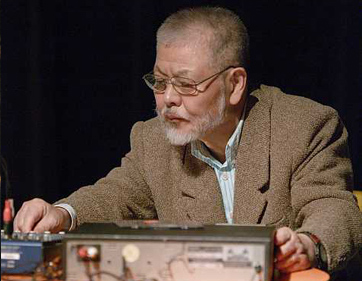
Yasunao Tone is a Japanese artist who has expressed his art through different media types. First of all, he was born in Tokyo, Japan in 1935. In 1957, he graduated from Chiba Japanese National University, majoring in Japanese literature. He became involved in the Fluxus movement during the 1960s, moving to the United States in 1972. He is most recognized for his musical work. To create distinct sounds, he used music players that extracted pieces from CDs and used those to create new selections. As a result of modern devices not being able to perform this, he uses old equipment. In honor of his work he has been awarded multiple grants from prestigious foundations. This includes the Foundation for Contemporary Arts, the New York State Council on the Arts, and the National Endowment for the Arts





